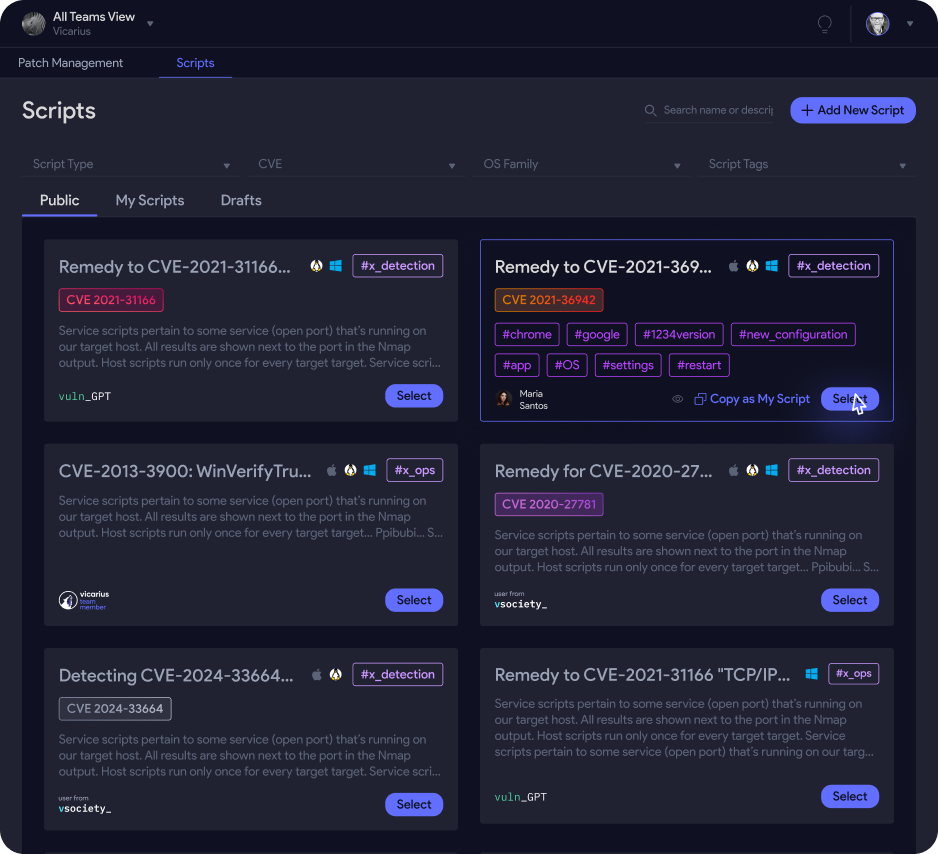
Visibility is everything especially when the cyber landscape is saturated with threats. Yet most organizations still struggle to answer a deceptively simple question: What are we exposed to right now?
The answer lies in Exposure Assessment Platforms (EAPs), a category of cybersecurity solutions introduced by Gartner that go beyond traditional vulnerability scanners to continuously identify, prioritize, and coordinate remediation of security exposures across all assets. In this blog, we’ll unpack what Exposure Assessment Platforms are, why they’re critical to your security posture, what’s missing from current implementations, and how to select and deploy the right EAP for your organization.
What Is an Exposure Assessment Platform?
An Exposure Assessment Platform (EAP) is a cybersecurity solution that continuously discovers, contextualizes, and helps remediate vulnerabilities and misconfigurations across your entire digital environment from on-prem infrastructure and cloud services to IoT and endpoint devices.
Unlike siloed scanners or manual spreadsheets, EAPs act as a central nervous system that connects the dots between assets, exposures, and business risk. By integrating with vulnerability scanners, SIEMs, cloud security tools, and ticketing systems, EAPs provide a real-time, unified picture of your cyber exposure.
At its core, an Exposure Assessment Platform helps answer four questions:
- What assets do we have?
- What are they exposed to?
- How risky is it?
- What should we do next?
Why Exposure Assessment Platforms Matter
1. Continuous Discovery and Visibility
Assets today are ephemeral think containers, serverless workloads, BYOD endpoints, and IoT devices. EAPs use continuous scanning and API-based integrations to maintain an always-up-to-date inventory of assets and exposures. No more blind spots.
2. Risk-Based Prioritization
Not every vulnerability is worth patching right away. EAPs weigh context: CVSS scores, exploitability (e.g., EPSS, KEV), asset criticality, network exposure, compensating controls, and business impact. This ensures you patch what actually matters.
3. Operational Coordination
Remediation isn’t a security-only job. EAPs bridge security, IT, and DevOps by providing task assignments, SLAs, automation hooks, and feedback loops. This coordinated response cuts down mean-time-to-remediate (MTTR) and builds trust between teams.
4. Strategic Reporting
EAPs aggregate all exposure data into digestible dashboards and reports that map progress over time, align with compliance frameworks (like NIST CSF or ISO 27001), and support board-level risk communication.
What’s Missing from Traditional EAPs?
Despite their promise, today’s Exposure Assessment Platforms are not without flaws. Here’s what’s commonly missing and what forward-thinking organizations should demand:
Limited Actionability
Most EAPs stop at prioritization. They don’t natively remediate exposures; instead, they hand off tasks to other tools or rely on manual follow-up. This slows everything down.
Static Risk Models
Many EAPs rely too heavily on CVSS without factoring in dynamic threat intelligence, exploit chatter, or real-time attack surface changes. This leads to outdated or misleading prioritization.
Compliance as an Afterthought
While EAPs do improve visibility, few offer automated compliance reporting or real-time policy checks. With frameworks like CIS, GDPR, and HIPAA increasing in complexity, this is a growing gap.
How Exposure Assessment Platforms Fit Into CTEM
Gartner introduced Continuous Threat Exposure Management (CTEM) as a strategic approach to reducing cyber risk through ongoing exposure discovery, validation, and remediation.
EAPs are foundational to CTEM. They support:
- Scoping: Constant asset inventory and classification
- Discovery: Identifying exposures via integrations and real-time feeds
- Prioritization: Mapping exposures to real-world risk
- Validation: Ensuring exposures are exploitable (or not) via threat modeling
- Mobilization: Orchestrating cross-team remediation workflows
An effective Exposure Assessment Platform is more than a tool it’s the engine that powers a mature CTEM program.
Recommendations: How to Adopt an Exposure Assessment Platform
If you’re ready to embrace proactive exposure management, here’s a step-by-step approach to successfully adopt an Exposure Assessment Platform:
1. Audit Your Existing Security Stack
Take inventory of current tools vulnerability scanners, asset management, SIEMs, CMDBs. Know what you have, what overlaps, and where the gaps are. EAPs work best when integrated.
2. Define Success Metrics
Are you trying to reduce MTTR? Improve patch coverage? Comply with CIS benchmarks? Your EAP should support specific goals and KPIs from day one.
3. Evaluate Platforms with Integration in Mind
Look for EAPs that plug into your existing ecosystem, especially ticketing tools (Jira, ServiceNow), CI/CD pipelines, and cloud providers (AWS, Azure, GCP). Avoid platforms that require heavy lifting or rip-and-replace.
4. Prioritize Automation and Remediation Support
Ask how the EAP helps act on findings. Can it automate low-risk remediations? Can it nudge teams with context-aware alerts? Can it launch a script or playbook? If not, it’s just a visibility tool.
5. Include Stakeholders Early
Security can’t adopt EAPs in a vacuum. Include IT, DevOps, Risk/Compliance, and even executive sponsors in platform selection and onboarding. Cross-functional alignment is key to success.
6. Run a Pilot Program
Start with a small scope: one cloud account, one business unit, or one remediation flow. Prove value with real metrics (e.g., “we reduced patching time by 60%”) before expanding.
7. Refine Continuously
Exposure management isn’t a one-time project. Refine prioritization models, feedback loops, and workflows based on usage data and threat evolution. The best EAPs adapt as your organization grows.
Spotlight: Why Vicarius Is Leading the EAP Pack with Innovation
When it comes to Exposure Assessment Platforms, Vicarius is redefining what it means to be proactive, intelligent, and truly autonomous. While many platforms promise visibility, Vicarius delivers innovation across every stage of the exposure management lifecycle, from discovery to remediation.
Here’s why Vicarius is leading the pack:
- Unified Exposure Management: Vicarius vRx provides a consolidated view of vulnerabilities, misconfigurations, missing patches, and exploitability across all assets including Windows, Linux, macOS, and third-party apps with no need for multiple tools.
- Autonomous Remediation Engine: Vicarius is the first platform to fully automate remediation with customizable, risk-aware playbooks enabling organizations to close the loop without human intervention, if desired.
- Patchless Protection with vShield: For scenarios where patching is risky or impractical, Vicarius offers real-time in-memory protection that shields vulnerable applications from exploitation even before a patch is available.
- AI-Driven Prioritization: By combining CVSS, EPSS, KEV, asset value, and exploit intelligence, Vicarius intelligently surfaces the exposures that matter most tailored to your unique risk posture.
- Zero-Setup Agentless Scanning: Unlike legacy tools, Vicarius can instantly scan environments without requiring heavy agents, dramatically reducing deployment friction.
- Flexible Integrations: With built-in connectors for tools like CrowdStrike, Tenable, ServiceNow, Vicarius fits seamlessly into your existing stack.
- Cloud-Native and Multi-Tenant Ready: Designed for scale, vRx supports MSSPs and enterprises alike, with isolated tenant environments, hierarchical RBAC, and unified policy management.
In a market where many EAPs still focus on reactive scanning and reporting, Vicarius leads with forward-thinking features that bridge the gap between visibility and action helping organizations preempt risk instead of chasing it.
Final Thoughts
The Exposure Assessment Platform is not just another cybersecurity tool it’s the backbone of modern cyber hygiene. It unifies fragmented data, prioritizes based on real risk, and turns visibility into action. As threats grow more complex and attack surfaces more dynamic, EAPs are essential for reducing the gap between detection and remediation.
But visibility without action is just noise.
To truly unlock the power of Exposure Assessment Platforms, organizations must go beyond dashboards and reports. They must integrate, automate, and collaborate. And they must treat exposure assessment not as a feature, but as a strategic function of security.














